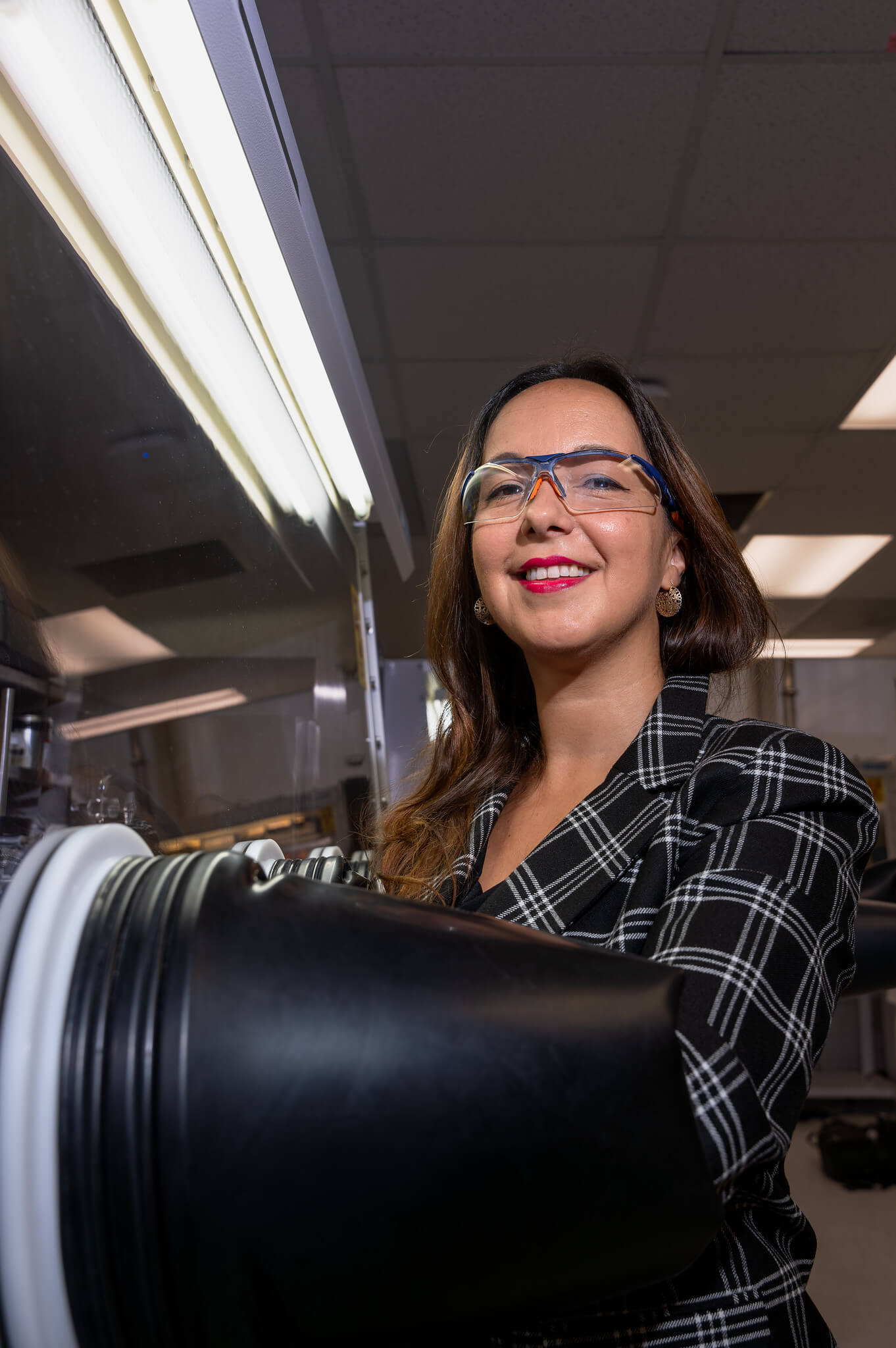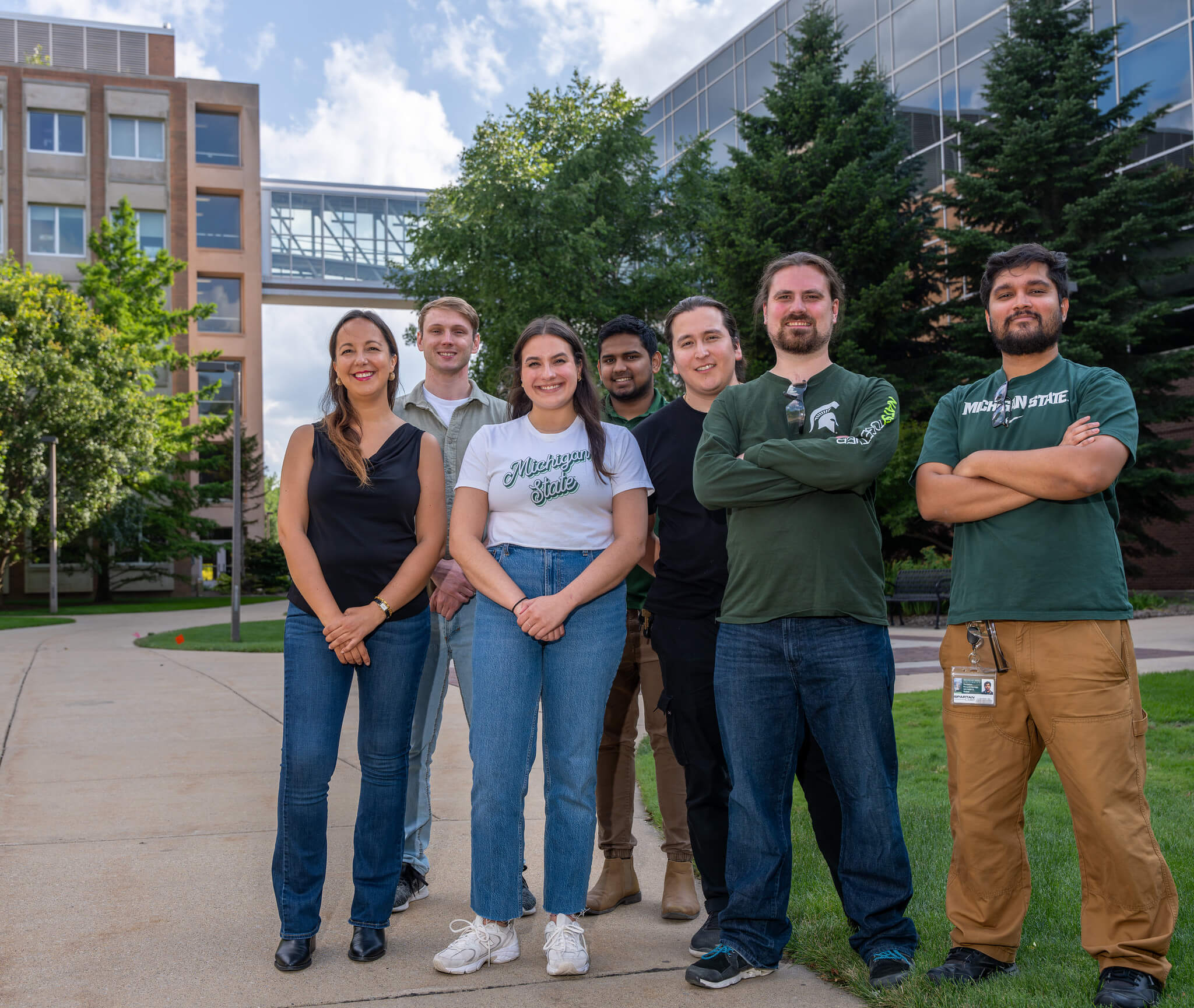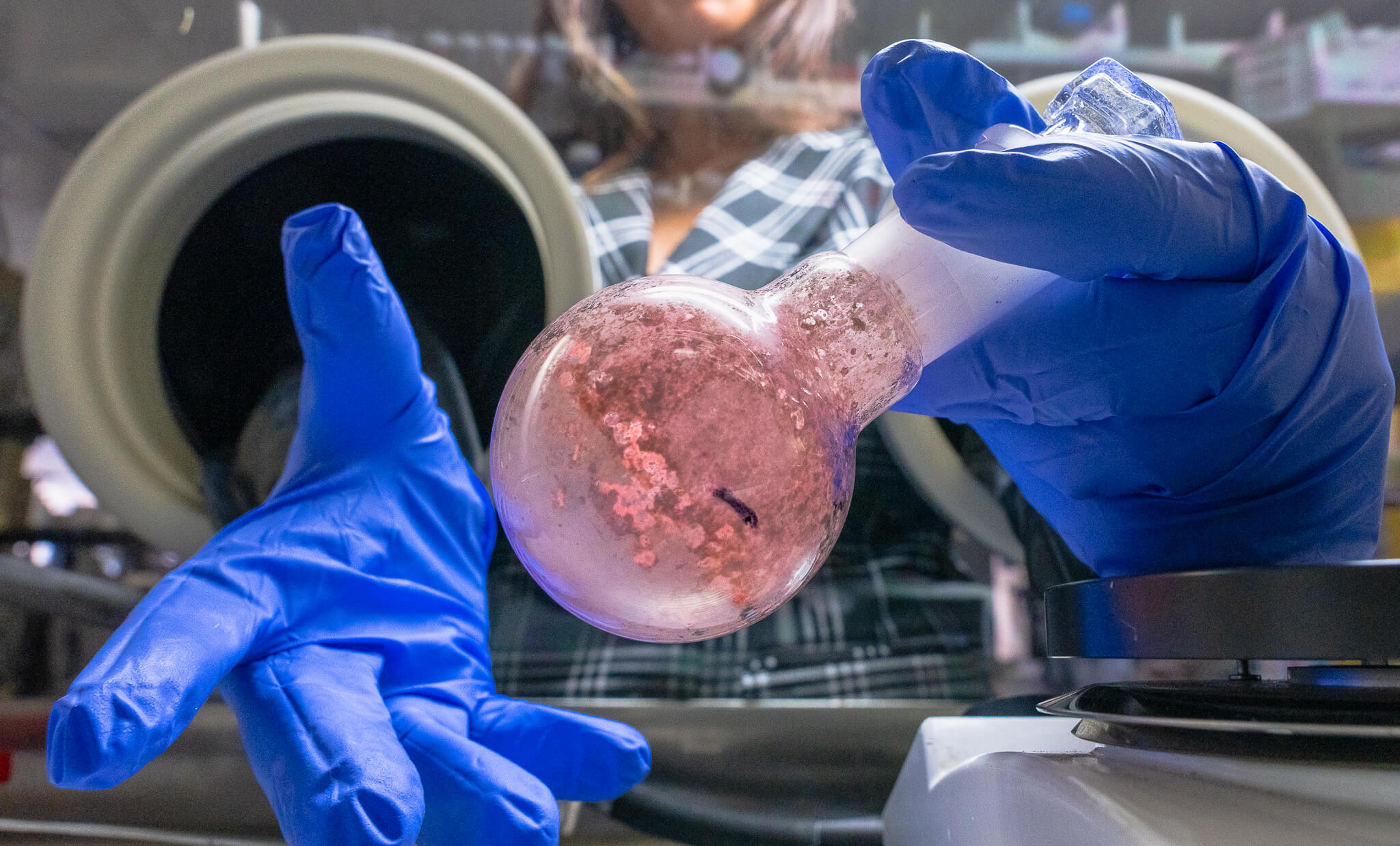Demir receives NSF CAREER Award
Article Highlights
- Selvan Demir, an assistant professor in the Department of Chemistry, has won a $770,000 Faculty Early Career Development, or CAREER, Award from the National Science Foundation.
- With the grant, Demir and her team will use underexplored elements from the periodic table as building blocks as they attempt to create the first classes of room temperature single-molecule magnets.
- These magnets have the potential to enable new high density data storage and quantum computing technologies, accelerating the pace of calculations and simulations used in a variety of fields.
Michigan State University Assistant Professor Selvan Demir received a 2024 Faculty Early Career Development, or CAREER, Award for her inventive work exploring the untapped potential of elements near the bottom of the periodic table.
Specifically, her team is interested in bismuth and the lanthanide elements, which also belong to a group known as the rare-earth metals. With the 5-year, $770,000 grant from the National Science Foundation, Demir and her team will use these materials as building blocks as they attempt to create the first classes of room temperature single-molecule magnets.
Such tiny magnets could help revolutionize data storage and quantum computing technology.

MSU Assistant Professor Selvan Demir. Credit: Finn Gomez/MSU College of Natural Science
“Professor Demir is an exceptionally creative scientist whose synthetic approaches to single-molecule magnets supported through this award combine elements not traditionally thought of together: lanthanides and bismuth,” said Timothy Warren, Rosenberg Professor and chair of the Department of Chemistry.
“This leads to important new advances in materials properties needed for myriad applications including quantum computing. Moreover, Professor Demir has the gift to visualize her novel science through her ‘Science Meets Art’ program. The compelling artwork she creates for the covers of scientific journals will be shared with the broader public through exhibitions at museums and art galleries.”
Demir sees chemistry everywhere in her world. Growing up in Germany, she was deeply curious about how and why things worked the way they did. When others couldn’t answer her questions, she turned to books and fell in love with science, augmenting her high school and college physics and chemistry courses with her own reading.
“I am humbled and honored to receive one of the most prestigious awards from the National Science Foundation, the CAREER Award,” Demir said. “It is the icing on the cake recognizing the team’s hard work and dedication.”
Initially, Demir was most interested in organic chemistry, but soon shifted focus to inorganic matter, especially the rare-earth metals — a series of 17 similar but subtly different elements in the periodic table.
“I find this underexplored area of the periodic table fascinating,” Demir said. “With the development of truly new compounds comes the possibility of discovering novel properties. It’s exhilarating to theoretically envision an unknown material and then go into the synthesis lab and realize it. Our lab and team at MSU are uniquely equipped to address these challenges.”

Demir’s CAREER project builds on her lab’s already exciting findings with lanthanides. Exploiting these elements’ unique electronic and magnetic properties, her team is opening doors to unprecedented materials with exciting new applications.
For example, they have chemically linked lanthanides with bismuth — a stable, non-toxic element — to make “single-molecule magnets,” or SMMs. By design, these compounds feature multiple unpaired electrons, the rare aspect that is key to their novel magnetic properties.

SMMs have the potential to enable new high density data storage and quantum computing technologies, accelerating the pace of calculations and simulations used in a variety of fields, including biochemistry and pharmacology.
As part of the CAREER award, Demir is also developing a graduate-level quantum information course that offers insights into this emerging area at graduate and undergraduate levels.
Demir’s creativity is not limited to chemical challenges. Her science feeds and is fed by her artistic drives. When the pandemic slowed her lab’s research, the team began dabbling in graphic design to communicate the excitement and novelty of their work.
Now, when the lab gets a paper accepted into a journal, they collaboratively create visualizations of the most important results using a program called Blender. The process takes about a week and then they submit the design as a contender to be featured as cover art for the journal. To date, every design they submitted has been featured, resulting in a total of 15 journal covers since 2021.
The hallway outside Demir’s office is decorated with these graphics, which will soon be shared with the public. This October, the Lansing Art Gallery will showcase a “Science Meets Art” exhibition of Demir’s teams’ visualizations, and she plans to further exhibit the work at MSU’s art museum.
- Categories: